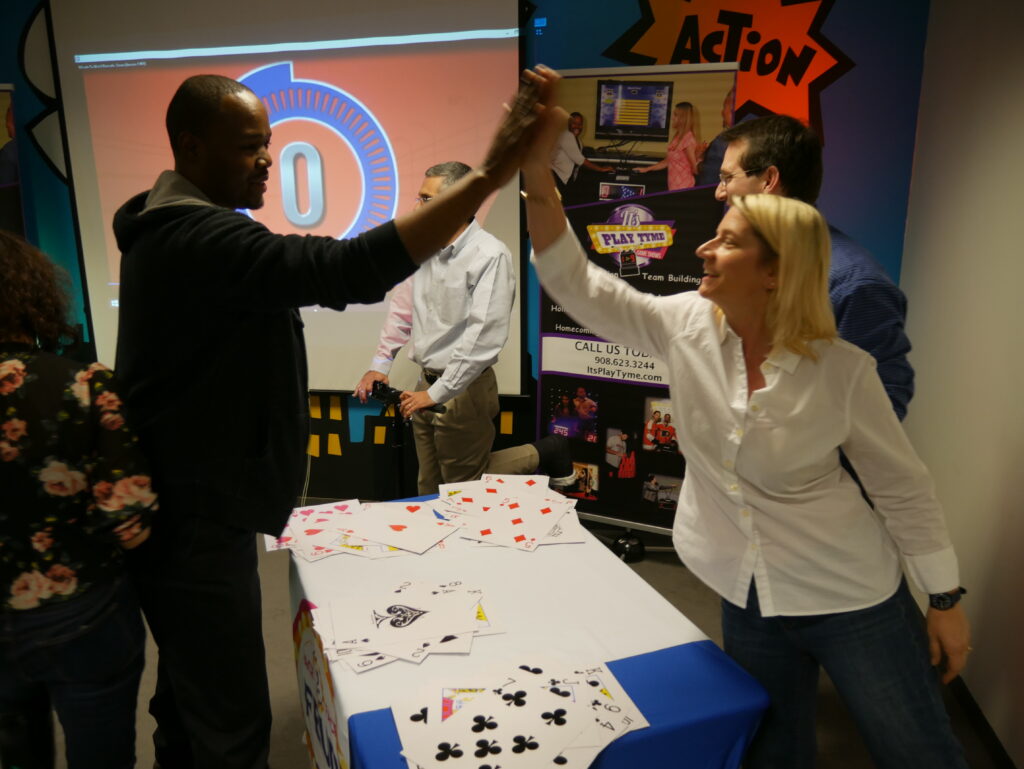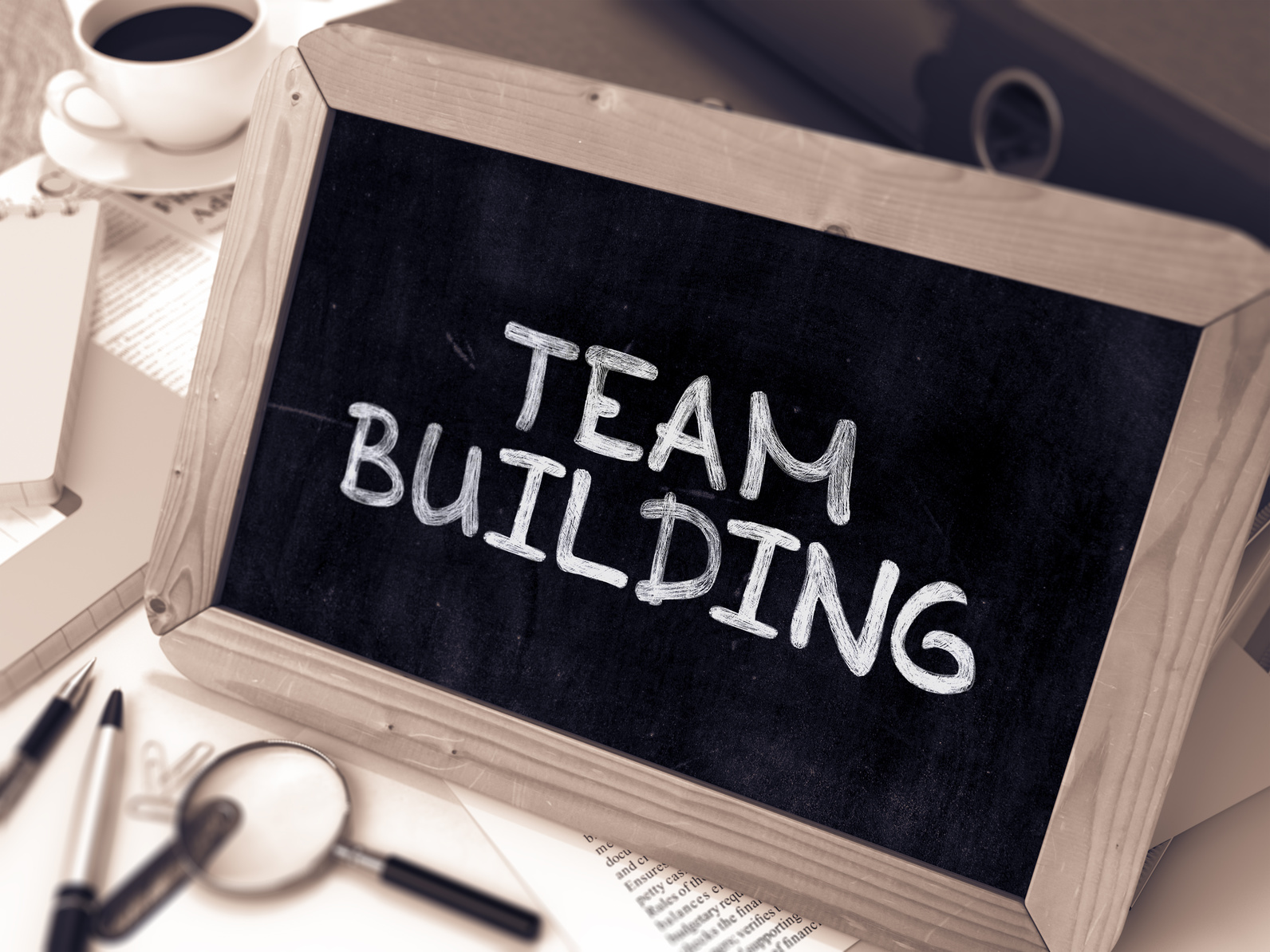As a Team Building Facilitator who understands the value of diversity, I know that creating a diverse and inclusive workplace environment can unlock innovation, promote creativity, and improve company culture.
To foster these outcomes, it’s crucial to implement a variety of diversity program ideas that can help your team members feel valued and included.
In this section, I’ll share with you some of the top diversity initiatives and strategies that you can implement to create a more inclusive workplace environment.
By implementing these program ideas, you can unlock the full potential of your team members and foster a culture of diversity and inclusion.

diversity-team-building-games
Unlock Innovation: Diversity Program Ideas for Your Team
Key Takeaways
- Diversity program ideas are crucial for unlocking innovation and creating a more inclusive workplace environment.
- Implementing a variety of diversity initiatives and inclusion strategies can help foster creativity and promote company culture.
- Building awareness through diversity training, you can create a more diverse and inclusive workplace environment.
- Creating supportive networks with Employee Resource Groups
- Fostering mentorship and sponsorship programs
- Implementing diversity metrics and accountability measures
- Promoting diverse hiring practices,
- Sustaining a culture of inclusion
Understanding the Importance of Diversity and Inclusion
As a team building facilitator, I have seen firsthand the benefits of workplace diversity programs and diversity and inclusion activities.
These initiatives not only enhance team dynamics but also promote creativity and innovation.
Having a diverse workforce allows for a range of perspectives and experiences, leading to more creative solutions and better decision-making.
In addition, promoting diversity and inclusion in the workplace can positively impact employee morale and productivity.
To foster a more inclusive workplace environment, it’s essential to adopt diversity and inclusion best practices. Here are some examples:
- Establish clear diversity and inclusion policies: Having clear policies that outline the organization’s commitment to diversity and inclusion is the first step in creating a culture of inclusivity.
These policies should be communicated clearly to all employees and enforced consistently. - Provide diversity and inclusion training: Providing diversity and inclusion training can help employees understand the value of diversity, overcome unconscious bias, and develop cultural competence.
This type of training can be offered in various formats, including seminars, workshops, and online courses. - Encourage open communication: Encouraging open communication and dialogue among team members can help foster a more inclusive workplace.
Creating a safe space where employees feel comfortable sharing their experiences and perspectives can lead to a deeper understanding and appreciation of diversity.
These are just a few examples of diversity and inclusion best practices that organizations can adopt.
By embracing these practices, organizations can create a more welcoming and inclusive work environment that values diversity and promotes innovation.
1. Building Awareness: Diversity Training Ideas
One of the fundamental ways to promote diversity and inclusion is by building awareness among team members.
A great way to do this is through diversity training and workshops.
Here are a few diversity training ideas:
- Unconscious Bias Training: This training helps team members identify their unconscious biases and understand how these biases can affect decision-making processes.
By becoming aware of these biases, team members can work towards creating a more inclusive and fair workplace. - Cultural Competence Workshops: These workshops aim to educate team members about different cultures and customs.
By doing so, team members can develop a deeper understanding and appreciation for diversity, leading to more inclusive workplace dynamics. - Gender Diversity Training: This training focuses on gender identity and expression in the workplace.
It helps team members understand and respect different gender identities, creating a more inclusive and supportive work environment for all.
Another way to build awareness is through diversity workshops. Here are a few diversity workshop ideas:
- Interactive Diversity Game: This workshop involves team members playing a game where they are presented with scenarios and asked to discuss how they would react.
The scenarios can cover topics such as unconscious bias, microaggressions, and cultural differences. This exercise can help team members develop empathy and understanding for others. - Meet the Team” Workshop: In this workshop, team members share information about their backgrounds and cultures.
This activity can help team members get to know each other on a deeper level and foster a sense of belonging and community.
Remember, building awareness is an ongoing process.
Be sure to continuously evaluate and update your diversity training and workshop ideas to ensure they are effective in promoting inclusivity within your team.

Boost Employee Morale
2. Create Supportive Networks: Employee Resource Groups (ERGs)
Employee Resource Groups (ERGs) are an effective diversity program example that can foster a sense of belonging and support within your organization.
These groups are typically formed around shared characteristics, such as ethnicity, gender, or sexual orientation, and provide a safe space for underrepresented employees to connect and collaborate.
Developing ERGs requires careful planning and consideration to ensure they are inclusive and beneficial for all members.
Here are some tips for ERG development:
Establish clear goals
Before creating an ERG, define the group’s purpose and objectives.
Outline what you hope to achieve through this program and who the target audience is.
Choose group leaders who are passionate about the initiative and have a clear vision for its success.
Got DEI Games ?
![]()
Book a live game show experience today!
Contact us for further details.
For Immediate assistance by text – 917-670-4689
No deposit required.
We plan and facilitate all diversity and inclusion activities.
Ensure inclusivity
Make sure the ERG is open to all members of the community it represents. Consider partnering with existing affinity groups to encourage cross-collaboration and intersectionality.
Strive to create a diverse and welcoming atmosphere that celebrates and honors all members.
| Benefits of ERGs | Examples of ERGs |
|---|---|
|
|
Establish resources and support
Allocate time, budget, and resources to support the ERG’s goals. Provide opportunities for employees to attend relevant conferences and training sessions. Encourage mentors and allies to get involved and support the group’s efforts.
Evaluate and iterate
Regularly evaluate the ERG’s progress and impact, and make adjustments as needed. Collect feedback from members to ensure the group remains relevant and effective. Celebrate successes and milestones along the way.
Employee Resource Groups are just one example of diversity program development that can be implemented to support a diverse and inclusive workplace.

3. Foster Mentorship and Sponsorship Programs
To promote diversity and inclusion and help underrepresented individuals advance in their careers, mentorship and sponsorship programs can be powerful tools.
Below are some diversity program ideas that can help foster these types of initiatives:
- Pairing experienced leaders with individuals from underrepresented groups to provide guidance and advice through mentorship programs
- Creating sponsorship programs where individuals from underrepresented groups are advocated for by senior leaders and given opportunities to advance in their careers
- Building employee resource groups (ERGs) that focus on mentorship and networking opportunities
These diversity program ideas can help build connections and provide support systems for underrepresented team members, ultimately leading to a more diverse and inclusive workplace.
Inclusion Strategies for Mentorship and Sponsorship Programs
To ensure the success and effectiveness of mentorship and sponsorship programs, it’s important to implement the following inclusion strategies:
- Develop diverse mentor and sponsor pools to provide underrepresented individuals with a range of perspectives and experiences
- Provide training and support for mentors and sponsors to help them understand and address unconscious bias
- Create a clear pathway for progression and advancement to ensure that individuals from underrepresented groups have equal opportunities for growth and development
By implementing these inclusion strategies, mentorship and sponsorship programs can help foster a more diverse and inclusive workplace, where everyone has the opportunity to thrive and succeed.
Example Mentorship and Sponsorship Programs
Here are some examples of companies that have implemented successful mentorship and sponsorship programs:
| Company | Program Description |
|---|---|
| Intel | Intel’s Global Diversity and Inclusion team launched a sponsorship program called “Thrive” to connect high-potential employees with senior leaders who can advocate for their career advancement. |
| Disney | Disney has a mentorship program called “Disney Launchpad” that provides underrepresented filmmakers with mentorship, resources, and career development opportunities. |
| LinkedIn’s Compass program pairs employees from underrepresented groups with mentors who can help them navigate their careers and provide guidance and support. |
These examples illustrate how mentorship and sponsorship programs can be tailored to fit the needs and goals of different organizations.

4. Implementing Diversity Metrics and Accountability
As with any business initiative, measuring progress and tracking data is essential for success. This is especially true for diversity and inclusion efforts.
It’s important to establish diversity metrics and hold leadership accountable for creating a diverse and inclusive workplace.
One best practice is to establish a diversity and inclusion scorecard.
This scorecard can track metrics such as the percentage of underrepresented groups in leadership positions, employee engagement survey results, and diversity training completion rates.
By regularly reviewing this scorecard, you can identify areas of improvement and track progress over time.

Another way to hold leadership accountable is through setting diversity goals. These goals should be SMART- specific, measurable, achievable, relevant, and time-bound.
For example, a goal could be to increase the percentage of women in leadership roles by 10% within the next year.
It’s also crucial to establish a system for reporting and addressing instances of discrimination or bias. All team members should feel comfortable reporting such incidents without fear of retaliation.
This can be achieved by creating a clear reporting process and providing training on how to recognize and address bias.
Lastly, creating an environment of transparency and open communication can help ensure accountability.
Leaders should regularly communicate the importance of diversity and inclusion and provide updates on progress towards established goals.
They should also be open to feedback from team members and willing to make necessary changes to promote a more inclusive workplace.
5. Inclusion Strategies for Promoting Diverse Hiring
Creating a diverse team starts with diverse hiring practices. To attract a broader range of candidates, organizations need to explore a variety of inclusion strategies.
Blind Resume Screening
One way to eliminate unconscious bias in the hiring process is to conduct blind resume screening.
This process includes removing candidate names and other identifying factors from resumes before they reach the hiring team.
By doing so, the focus is solely on the candidate’s qualifications and not their background or demographics.
Diverse Interview Panels
Another inclusion strategy to promote diverse hiring is to create diverse interview panels.
By having a diverse group of interviewers, candidates are more likely to feel comfortable and represented.
Additionally, having a variety of perspectives can help in identifying the most qualified candidate for the job.
Partnerships with Diverse Organizations
Organizations can also establish partnerships with diverse organizations to attract a more diverse pool of candidates.
This collaboration can include attending job fairs hosted by organizations that represent diverse populations or advertising open positions on their websites and social media platforms.
This inclusion strategy not only helps attract diverse candidates but also strengthens relationships with these organizations.

Implementing these inclusion strategies can help promote diverse hiring and create a more inclusive and well-rounded workforce.
6. Sustaining a Culture of Inclusion
Creating a culture of inclusion requires ongoing effort and commitment. As a leader, I understand the importance of continuously engaging in diversity and inclusion activities.
Here are some additional diversity and inclusion best practices to embed inclusivity into your organization’s culture:
1. Ongoing training
To sustain a culture of inclusion, ongoing training is necessary. It’s essential to provide your team members with opportunities to continue learning about diversity and inclusion best practices.
These trainings can include topics such as unconscious bias, cultural competence, and inclusive language.
By incorporating these trainings into your organization’s culture, you can create a more inclusive workplace environment.
2. Employee feedback mechanisms
Creating a safe space for employees to provide feedback is crucial.
Establishing employee feedback mechanisms such as surveys or suggestion boxes can help your organization understand how team members experience diversity and inclusion efforts.
By gathering feedback, you can identify areas for improvement and make necessary changes to achieve inclusivity.
3. Creating a safe and inclusive space for all team members
It’s crucial to create a safe and inclusive space for all team members. This means having policies and procedures in place that support inclusivity.
Creating a code of conduct that prohibits discrimination and harassment can help ensure that all team members feel welcome and valued.
Also, celebrating diversity and implementing diversity and inclusion activities such as cultural events or affinity groups can help create a sense of belonging for all employees.
By implementing ongoing training, employee feedback mechanisms, and creating a safe and inclusive space for all team members, you can sustain a culture of inclusion within your organization.
These diversity and inclusion best practices can help ensure that inclusivity remains a top priority and that your team members feel valued and supported.
Frequently Asked Questions

frequently asked questions
What are some diversity program ideas that can foster innovation within my team?
Implementing diversity initiatives and inclusion strategies such as mentorship programs, employee resource groups, and diversity training can help foster creativity and inclusivity within your team, unlocking innovation.
Why is diversity and inclusion important in the workplace?
Diversity and inclusion in the workplace are crucial for creating a dynamic and inclusive environment.
They promote diverse perspectives and experiences, improve team dynamics, and enhance overall creativity and problem-solving abilities.
What are some diversity training ideas that can help build awareness?
Building awareness about diversity and inclusion can be achieved through various diversity training activities.
Consider organizing team building workshops on unconscious bias, cultural competence, and the value of diversity to educate your team members.
How can Employee Resource Groups (ERGs) contribute to fostering a supportive network?
Employee Resource Groups (ERGs) provide a platform for employees with similar backgrounds, interests, or experiences to come together.
These groups can create a supportive network, foster a sense of belonging, and provide valuable resources for underrepresented employees.
How can mentorship and sponsorship programs contribute to promoting diversity and inclusion?
Mentorship and sponsorship programs can play a significant role in promoting diversity and inclusion by providing opportunities for individuals from underrepresented groups to advance in their careers.
These programs also contribute to building a more diverse and inclusive workforce.
How can I measure and track the progress of my diversity and inclusion efforts?
Implementing diversity metrics and accountability measures is essential to track progress. Set specific goals, collect relevant data, and regularly evaluate your efforts.
This way, you can ensure that your organization is continuously working towards creating a diverse and inclusive workplace.
What are some strategies for promoting diverse hiring practices?
To promote diverse hiring practices, consider implementing blind resume screening, diverse interview panels, and partnerships with diverse organizations.
These strategies can help attract a wider range of candidates and ensure a more inclusive recruitment process.
How can I sustain a culture of inclusion within my organization?
Sustaining a culture of inclusion requires ongoing efforts.
Continuously engage in diversity and inclusion activities such as training, soliciting employee feedback, and creating a safe and inclusive space for all team members.
These practices help embed inclusivity into your organization’s culture.









